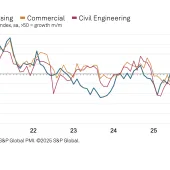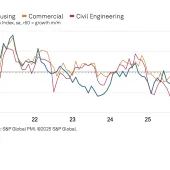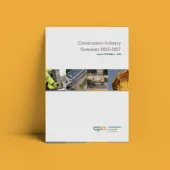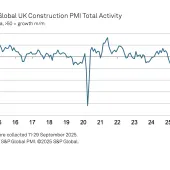Aggregates Replenishment

First published in the April 2019 issue of Quarry Management
How is the industry performing?
Demand for aggregates is set to increase over the next decade, supported by major infrastructure projects including HS2, Hinkley Point C, Thames Tideway, Crossrail 2, Heathrow Runway 3, Road Investment Strategy 2 and government plans to provide 300,000 new homes each year. Estimates provided by the Mineral Products Association (MPA) have suggested that demand for aggregates could be up to 3.8 billion tonnes in total between now and the end of the next decade. This would represent an increase of 25–30% on recent levels of aggregates demand.
Critical to the delivery of all projects is the provision of an adequate source of aggregates across Great Britain from all sources, including primary land-won and marine, recycled and secondary. Fundamental to this is the replenishment of primary reserves of sand and gravel and crushed rock through the planning process, to replace those that are already being depleted.
Much has been made of this in recent years to highlight the fact that all parties – from national government, local and regional planning authorities, industry bodies and aggregates producing companies – need to be engaged in a timely and co-ordinated manner to ensure aggregates will be available when and where they are needed.
BDS Marketing Research, the leading consultancy in the aggregates industry and related sectors, are ideally placed to shed light on the current state of the industry with regards to aggregates replenishment. BDS have been monitoring each of the 400+ planning authorities for more than two decades to identify activity relating to new applications and decisions on existing schemes for new aggregates reserves.
Going back even further, the consultancy has published an annual report, ‘Estimated Outputs of Pits, Quarries and Marine Wharves in Great Britain’, looking at the demand for aggregates. In addition, a separate analysis, ‘Estimated Reserves of Pits and Quarries’, is published every three years which helps to identify remaining reserves and years’ life remaining. Both reports provide detail down to individual site level, summarized by company, county, region and nationally.
This unique combination of resources has been drawn on to present a new, detailed report, ‘Annual State of the Industry – Aggregates Replenishment (2018)’, focusing on the level of aggregates that have been consented by planning authorities. This has been compared with BDS estimates of output. Data have been reviewed since 2014 to identify replenishment rate trends for the last five years, as well as more detailed analysis of activity for the calendar year 2018. Replenishment rates by region and nationally, split by sand and gravel and crushed rock (hardstone, limestone and sandstone) are provided, along with details of which companies and where the major consents were granted in the last 12 months.
Between 50 and 60 planning consents for new aggregates reserves have been granted per year, on average, in the period 2014–2018 in Great Britain. Of some concern, however, is that the figures for the last two years have been the lowest recorded during that period.
The report identifies that, in 2018, planning consents granted for land-won sand and gravel marginally exceeded the amount of material extracted in Great Britain in the year. Analysis of 40 planning consents for sand and gravel last year identified just over 50 million tonnes of new reserves. The situation is not representative across all areas, however, with only three of the 10 regions returning a replenishment rate equal to or exceeding the national average. Two regions showed no new reserves consented at all during 2018.
The number of planning consents for crushed rock is significantly lower than for sand and gravel with, on average over the last five years, 20 schemes permitted per year. However, the tonnage of material consented is generally greater. In 2018 only a quarter of estimated crushed output was replaced by consents for new reserves, meaning, in simple terms, that for every four tonnes of material extracted, only one tonne was replenished. On a regional basis, two regions, namely the South West and Wales, accounted for 82% of the total tonnes consented last year.
Tarmac and Aggregate Industries saw the largest tonnage of consents for primary aggregates reserves in 2108, accounting for almost 70% of the total between them. They are also the two largest aggregates-producing companies in Great Britain.
Marine sand and gravel is well placed to provide an increasingly prominent role in aggregates provision in Great Britain in the coming years. Current output levels of material dredged for aggregates purposes are between 15–20 million tonnes per year, although 18% of last year’s figure was landed at wharves on mainland Europe. However, The Crown Estate has reported that its current licences would allow for annual extraction to increase to nearly 30 million tonnes by the end of the next decade. The total of licensed reserves held by The Crown Estate, which owns almost all of the marine sand and gravel resources lying off the coast of England, Wales and Northern Ireland, stood at 342 million tonnes at the end of 2017.
There is less opportunity for recycled and secondary aggregates to reduce the pressure on the replenishment of virgin materials. The level of recycled aggregates materials, produced largely from construction and demolition waste, has started to plateau in recent years. Meanwhile, secondary aggregates, which are produced from the waste products of other industrial processes (such as energy-from-waste, china clay production, steel manufacture and energy production) currently only account for around 3% of total domestic aggregates consumption.
This analysis of planning activity has never before been carried out across the whole of the aggregates industry in Great Britain. It is the intention that the report will be updated in the first quarter of each year to show how the industry is responding to the key pressure for supply it faces.
The report will help operating companies, industry observers, investors and other interested parties to gain a clearer picture of replenishment activity and identify opportunities for new activity, as well as supporting both operational and strategic activity. For further details of the report, contact Andy Sales at BDS Marketing Research Ltd: andy.sales@bdsmarketing.co.uk; or tel: (01761) 433035.
- Subscribe to Quarry Management, the monthly journal for the mineral products industry, to read articles before they appear on Agg-Net.com








